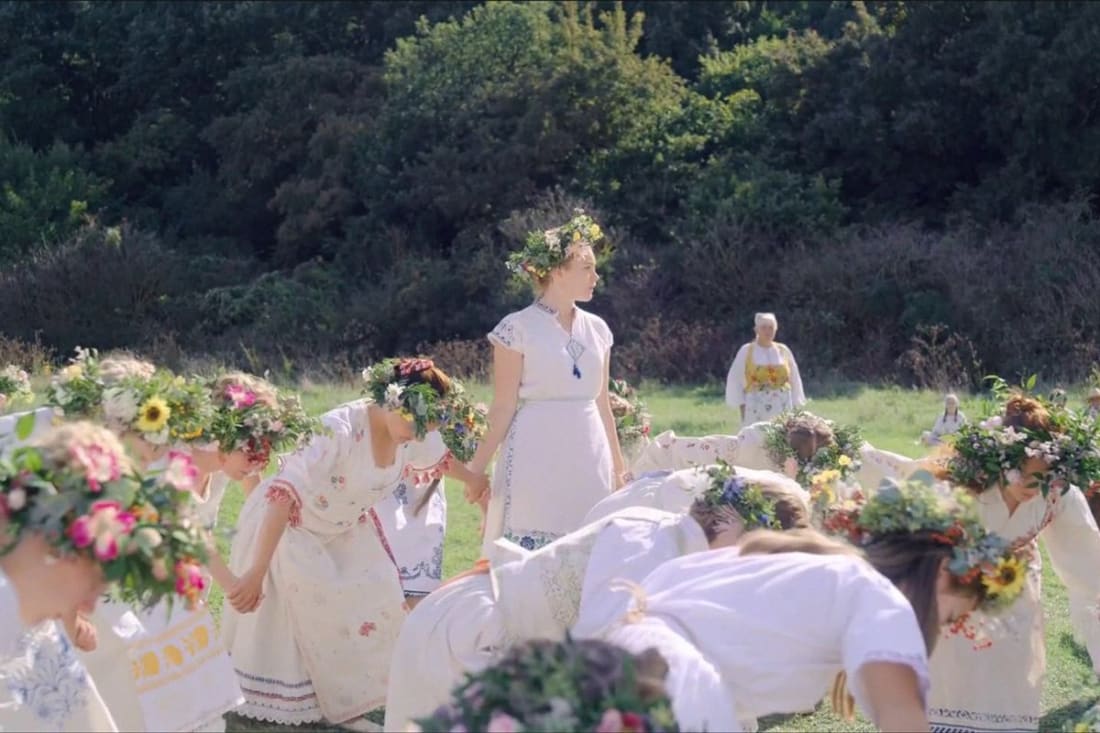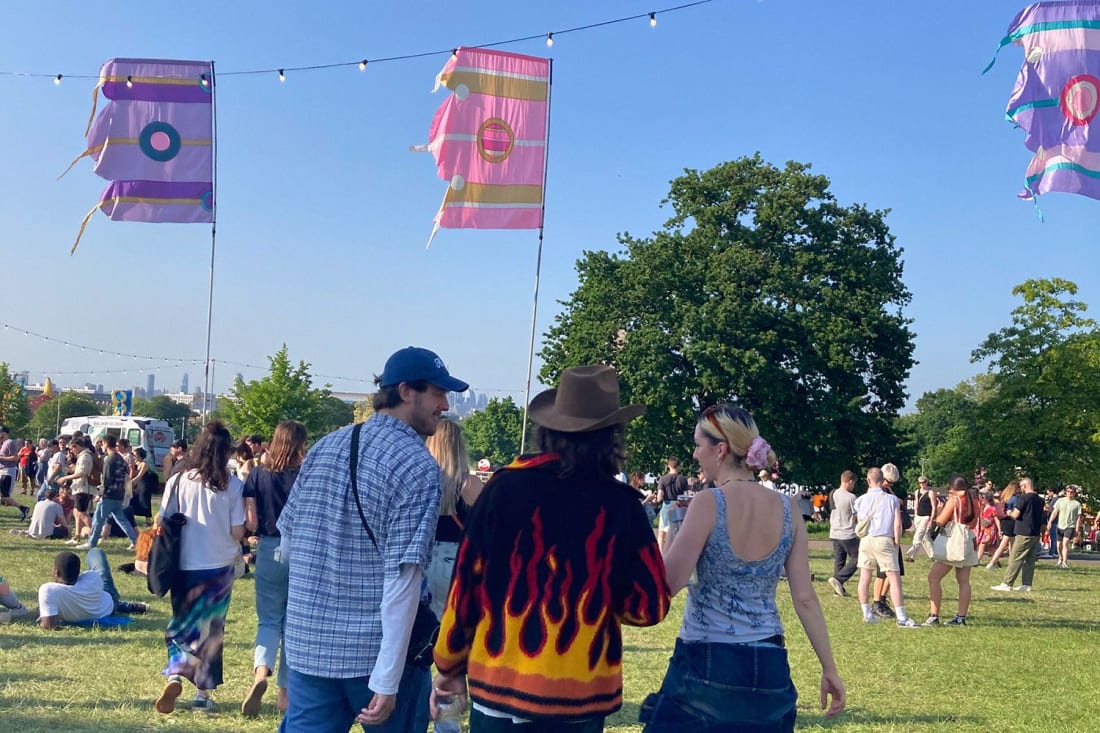7 tips on how to beat crowds at gigs and festivals
How to get the most out of your festival experience for both safety and joy's sake...
How to get the most out of your festival experience for both safety and joy's sake...
For me, it was a festival in Spain. Just as one act closed out her rendition of singalong noughties altpop electronica on one stage to a crowd of tens of thousands, another act, on the other side of the festival began an eerily similar act’s n a DJ set of techno, K-pop and a sneaky drop of Mariah Carey’s All I Want for Christmas Is You. It was obvious that tens of thousands of people were about to swarm from one end of the site to the other so they could catch both acts. But the only route - that is, the only route not reserved for VIPs, which became known as the ‘privilege bridge’ - was shuttered. With no movement other than towards a 10-foot high metal gate and no tabard-ed officials or security in force to tell us to back off, things got hairy. It was 28 degrees in the middle of the night and hordes of people up to the gills with 2CB, MDMA and the rest were padding through streams of urine from the nearby portaloos, trying to get closer to a gate that, despite people’s shoves and pushes, wasn’t budging.
This is how to not manage a crowd at a festival, a near miss that won’t ever really be reported on or analysed because, well, no one died, did they? Against a backdrop of severe crowd crushes that have seen, in the past 10 years alone, around 4160 people lose their lives - 10 at Astroworld, over 2,400 at Mina near Mecca, and two at Brixton Academy in London - festival attendees are to feel grateful for what they get. Even if that means a scary crowding of simply too many mangled bodies in one place that can ruin, if not our lives, our ability to have a relaxing and fun time.
In light of the fact festivals are crowded places and crowds, when dense, present a serious risk to life, limb and just having a good time, we thought we’d find out from a crowd safety expert how to navigate a tricky festival crowd.
While we know it’s not up to any attendee in singularity to make a festival or gig safe, there are things that can be done to keep our wits about us when in an enclosed space with loads of other people. Professor G Keith Still, visiting professor of crowd science at the University of Suffolk - who has over 30 years of crowd management experience, including at huge events like the 2011 Royal Wedding and the 2012 London Olympics and has written books such as Introduction to Crowd Science and Applied Crowd Science - gives us a good idea of how to stay on top of surging crowds.
Get the measure of things out the gate
Ticket and setlists screengrabbed on your phone? Bucket hat plopped on? Hand sanitiser ready? Get ready to add to your festival preparedness list a good assessment of what’s going down. When you enter the cattle gates to be checked, searched and tagged, you’ve got an opportunity to check how well this festival’s been planned and therefore, perhaps, how safe you’re going to be inside. As Prof Still puts it: “If the queues are excessive and they're not properly organised into lanes, they’re usually an early warning indicator.
“If that's the entry system, what’s the rest of the system? You should be aware from that point on.”
Keep your wits about you
Once in, get an idea of which routes people are taking to get out of tight squeezes, and at what sort of time they might go, Professor Still advises: “Look for where the crowds accumulate in queues for the toilets, the layout of the site - all of those are indicators of how well planned the safety is. If it’s not planned and designed around crowd movement, then you should be a little bit more cautious about your density ahead of you.”
Remember it’s not about big or small crowds, it’s about density
Professor Still’s website shows in stages the increasing density of a crowd. It’s one of those simulations that has you holding your breath the further down you scroll, like the video showing the depths of the briny sea. At the top of this simulation, there’s one person per square metre. Perfect arm-flinging, do-si-do vibes. Next, there’s two people per square metre - close enough to smell your dance pals’ three-day-old BO under the wet-wipe wash. Then, by three people per square metre, you’re in perfect bump and grinding territory. Four people per square metre is distinctly uncomfortable, and by five, you’re at the safe maximum. When you see the squidge of six bodies within one square metre, things get scary.
This can happen in an array of contexts, Professor Still explains: “Risk really comes about exposure to high density, and that can happen in small events and equally in large events. That said, larger events, like Glastonbury, have a huge amount of resources and safety teams in play. And it becomes so big that they can't afford failure, so they hire professionals to do the jobs. The smaller events on a shoestring budget, maybe don't take the same level of awareness. I've seen risks in queues, the smallest 400. And I've seen very safe environments in crowds of 30,000. So yeah, it really it's just a question of how well prepared it is and how well thought through the real risks are."
And perhaps it's worth going to an event that seems a little over-sponsored and flashy, because more money can tend to mean better security: "Of course, the events industry just tend to go for the lowest bidder. I think it was one of the NASA scientists who said, ‘you know, we're sitting on top of a massive amount of jet fuel and all this has gone to the lowest bidder.’ Yes, all being built by contractors who put in the lowest pitch. Yeah. So that's the philosophy you take into play."
Plan your festival exit
It might seem like you’re anticipating the end before it’s even begun, counting the fun away, but knowing your way home and getting it before you get carried away can serve you nicely. Professor Still explains: “Make your own risk awareness; how did you come in? Where are the exit points? Are there other ways out? Is the signage visible? Just a couple of minutes’ familiarising yourself with the site layout can make a huge difference. If there's any form of emergency, you need to get out quickly. It's not saying that anything will go wrong, it's just common sense. When you're out with kids, you say “Right, guys, in the event of an emergency where are the exit points? Where would we meet up? If we got separated?” And considering festivals are where adults go to behave like big kids, this is “basic, common sense”.
Read the festival's vibes and adjust your expectations accordingly
You can do this even before you turn up by getting a good idea of what sort of people turn up to this sort of festival/gig: “What is the crowd around you doing? What type of performer is playing? And before you go to the venue have some idea about current behaviour or previous type of events. You get a very different trade behaviour from, say, a Disney princess show than you would from a heavy metal thrash. So plan accordingly, it can make a huge difference not only in risk, but also enjoyment.”
One study found that at punk gigs, “The culture was, you know, a good event is coming out feeling like you've been through 10 runs of Apollo Creed or Rocky. This is rather astounding to us. But again, it's perception. You need to understand your crowd. When you're planning for these events. What are the expectations? How are we managing that, how do we make a safe enough environment? Mosh pits, for instance, can be a lot of fun if they're carefully monitored and controlled. But you know, going into a mosh pit without the expectation of at least coming out with some kind of bruising…that's the way it is!”
This reading of vibes gets even more intense when you’re working on security for an event, where data from ticket sales can help in safety planning. Next time you resent a ticket site for making you enter in your address before allowing you to buy some hotly-coveted tickets you’ve spent your whole Friday morning trying to get, as this information helps crowd control organise the event: “Postcodes help us to look at transport loading, direction of movement, where the crowds are coming from, where they’re starting at. A project in Warrington uses postcode analysis for the determination of new structures like motorway bridges. So they were looking at where the postcodes for the general ticket sales were and how people would then get to the site and whether or not they needed additional pedestrian walkways or flyovers. So it's a lot of analysis.”
“It's like, once you've got the data, torture it for long enough in general, it will reveal secrets. But it's getting that data, getting that information, reliable information as well and using it.”
Don’t panic in a crowd, but be vigilant
Professor Still cites a German risk assessment from some years ago that had the pyramid that says, “for every mass fatality underneath that are 30 fold minor injuries, 30 fold unsafe acts and so on. So for any fatality that occurs, there's generally a hell of a lot more close calls, near misses or minor incidents set below that, but they don't get reported!”
My experience at that Spanish festival was one near-miss. Luckily, the crowd worked together to assess that no, we wouldn’t be getting to the other side of the festival any time soon, and group by dizzy-eyed group, padded back towards where we’d come from. I found one man in a tabard. Through his broken English, he explained that the gate was closed, and that was that. So I sauntered back to find another place to party, wondering how things got this bad. Would this sort of thing happen so easily in the UK, with our legacy of festival-going?
Be extra careful at festivals outside the UK
The UK has a long history of festivals and a brief history of free parties and the result has been a slew of health and safety legislation to keep partiers happy and healthy on site.
“There’s the Occupiers' Liability Act, Health and Safety at Work Act, the Corporate Manslaughter and Homicide Act” whereas in different countries, “You’ve got all manner of local legislation you need to adhere to that can be different in different counties, different states”
In essence, other countries may not give festival-goers the same rights and freedoms and it’s always good to brush up your knowledge of these before you head off into the abyss.



